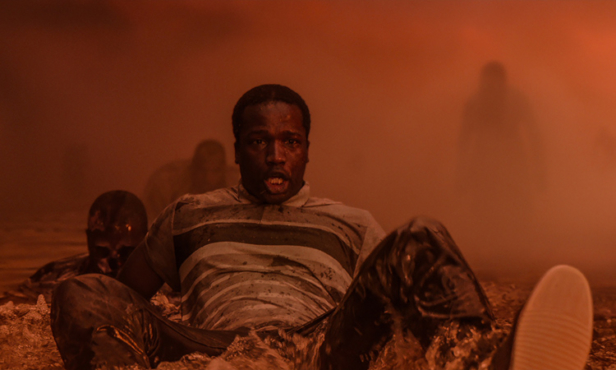Young refugee couple Bol (Ṣọpẹ́ Dìrísù) and Rial (Wunmi Mosaku) have escaped war-torn South Sudan and made the arduous journey to England, where they have been granted a house.
After being told they are unable to leave the house, the two try to adjust to their new life in a new country. However, they quickly realise their home has an unspeakable evil lurking beneath the surface that seems determined to evict (or kill) its new residents.
A story of horror, heartbreak and grief, it soon becomes apparent that the house’s spirits aren’t the only demons the couple must battle.
We spoke to His House’s director and screenplay writer, Remi Weekes about his debut feature…
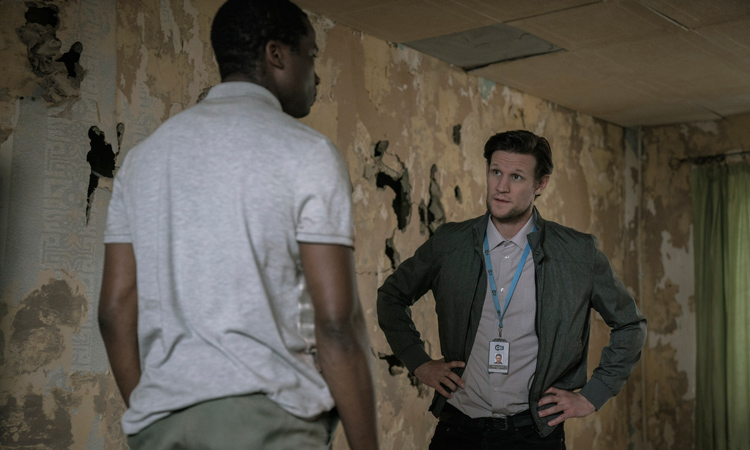
How did things begin for you with His House?
I started making short films and commercials as a part of a directing duo called Tell No One and we were signed to share offices with two producers Aidan [Elliot] and Martin [Gentles]. So whenever I went into their office, I’d speak to them and talk about how one day I’d like to make feature films and they mentioned they had a project.
They had the concept to make a horror film based on the immigrant experience. But for whatever reason, [the story’s original writers] Felicity [Evans] and Toby [Venables], were not quite getting to the point they needed to get to, and asked if I wanted to pitch them my take, my vision of the story. So I pitched them I guess what you see in the film, which is an intimate psychological horror about two people trying to survive after surviving. Trying to learn how to recover from their trauma.
What were the main points you were trying to put across with your version of the story?
I was thinking, how will they make this? How will they put truth into this story? How can I make this personal to me in some way? I kind of drew on my experiences growing up in London and being a person of colour and being amongst a community that’s been othered. We’re often torn in two different ways – this one side of us that wants to try and assimilate and fit in and try and disappear within the culture. But then there’s the other side of us that wants to rebel from that, wants to be proud of our background and our history. We cling to that and those two sides are always battling within ourselves and I thought it would be really interesting to portray that within the married couple and have this being the emotional crux of the film. How, when you’re trying to move on, do you try and suppress your history, or do you lean into it?
Were there any inspirations you turned to when writing the screenplay?
We did a lot of research. It was important for us and for myself to try and base the story – although it is fictional – as much on real research as possible. So we researched the asylum process in the UK and also the migration journey from Africa to Europe and the history and folklore. [We also researched] the spooky stories they would tell each other and try and combine it into this kind of fable in the story.
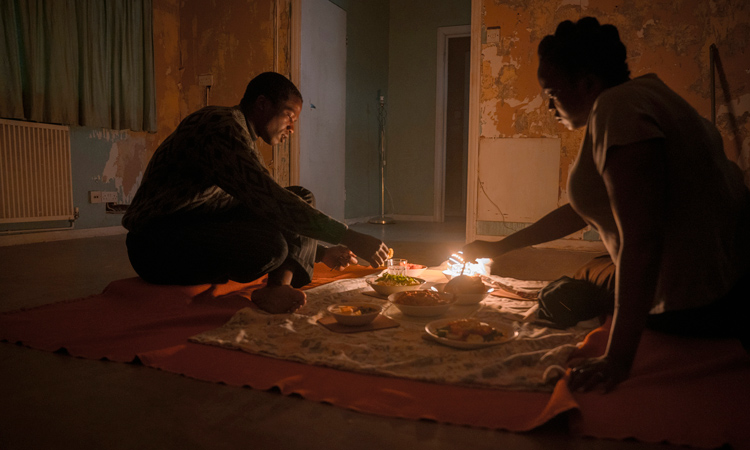
Why did you decide to go down the horror route?
I’ve always enjoyed horror films and I’ve always enjoyed the cinema as a form of spectacle. I find it a really exciting way to tell psychological stories. Tell stories where you’re inside the heads of characters and trying to visualise and reveal the anxieties and fears of a character.
I guess growing up, like anyone, those films hold such an important place in your imagination and in your life, that I guess that’s the kind of cinema I’d like to try and make!
There are some stunning visuals in His House – was this an element you wanted to place particular emphasis on?
So I started as the directing duo Tell No One with my friend from school, Luke White, and our style is very visual. But what’s really important to us is to create really interesting visual films with almost nothing. Using whatever resource we have available. So even with this film, it was always important to me to see how I can do something visually interesting, but keep it pared back or simplified or in-camera.
So something like moving from the kitchen to the ocean and just to reveal that with a camera move is something that excites me as a filmmaker because the transition is almost banal. But inside the banality, it’s what makes it for me, even more exciting because you’re not throwing baubles and explosives you’re just simply reading something and I think that’s a lot of fun.
How did you find crafting the jump scare and horror elements?
Working as Tell No One, I really learned the craft. I’m still learning the craft, but it’s really important for me to be a student of film making and understanding the craft and how to build something like a scary scene or funny scene. Things like that are really important to me. It’s something that I try and study by either making and also by watching lots of other films.
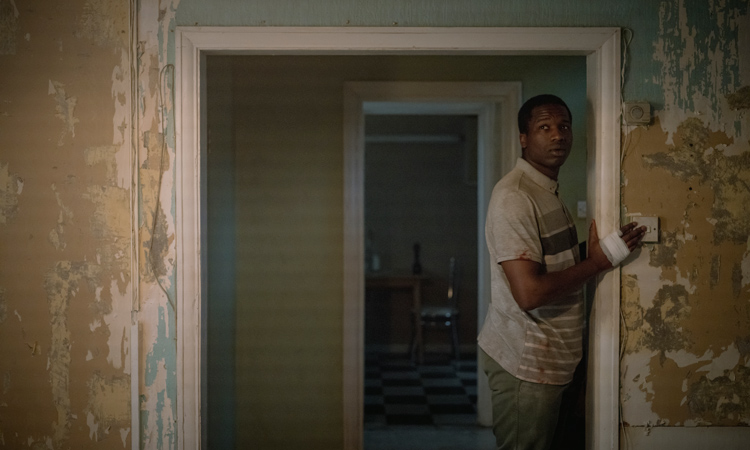
Why did you decide to show the house’s ‘spirits’ straight away?
It’s not something that I consciously wanted to show, but it was always important for me [to decide] at what point in the film to show something. It was always a kind of challenge [to decide] how much to see and when to show something. That’s something that probably developed during the editing and the putting together of the film.
You also decide to use real actors instead of CGI for the evil spirits…
I love CGI. CGI is fantastic and there is some CGI in the film somewhere but the process of making something is important to me. I like the idea of being able to make something like the creature physically, something that we can touch. I mean that’s exciting, especially to a filmmaker. To have something in the room with you is a thrill.
How did you decide on what house Rial and Bol would have?
Everything in the film is supposed to be based on the research and truth. So the house in the film is not dissimilar to a house an asylum seeker would be given. There are some differences. For example, they probably wouldn’t be just alone in the house, there would probably be lots more people, but we tried where possible to use facts to govern how we created the film.
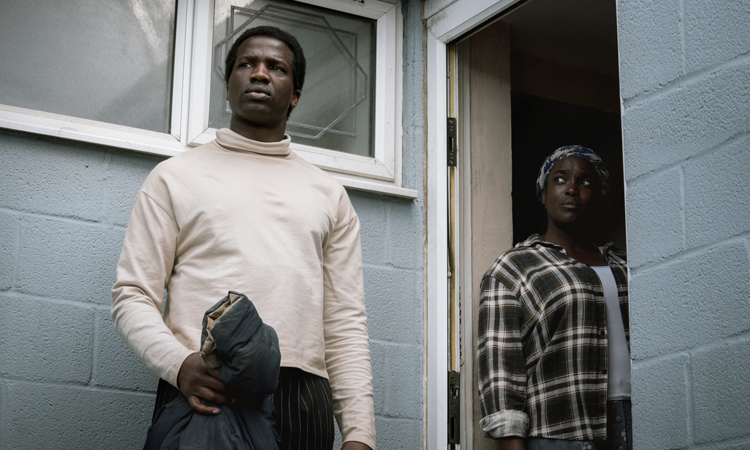
Why is the movie called His House?
I like that it has many different readings to it. It’s quite mysterious. The ‘his’ in the title could refer to different characters in the film and I like that kind of wordplay.
Gender roles are also played with in the movie. Bol is very much in touch with his emotional side while Rial is pretty strong-willed…
Yeah, totally. Even during the editing, in the post-production and in the script as well, there were always notes from producers and people concerned that there was a bit of a gender swap in the film. Many of the producers were concerned that Wunmi [Mosaku]’s character for example wasn’t afraid enough for a horror film to work. Because she’s the female protagonist, she had to be more scared, she had to be more terrified. For me, the characters made sense, but I know that during the making of the film there was a lot of questioning from people of whether the gender roles were correct. But I liked it.
The dynamic in the film is important to me. It was important for the characters to be behaving consistently. We had Ṣọpẹ́ [Dìrísù] who was desperate to suppress his history and his past and to contain it. While Wunmi’s character wanted to face her past. It was important to her to always be moving towards that, even if it included spooky stuff. It was important for her to interrogate it and to understand it.
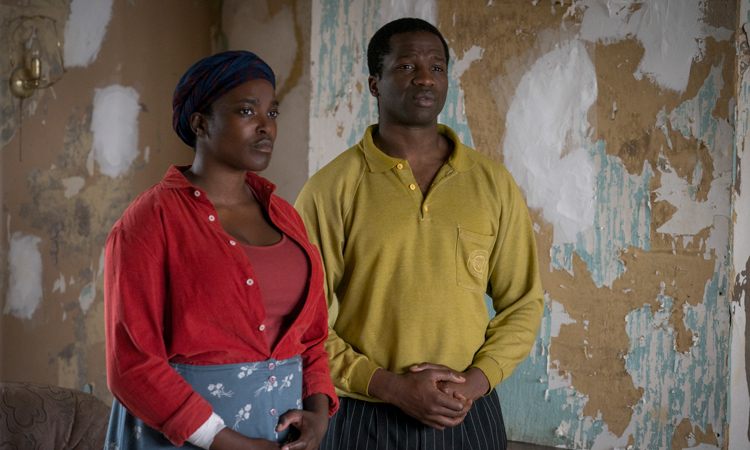
Rial and Bol immediately understand and accept their house is haunted rather than deny their existence. Why did you choose to go down that route?
I guess it probably comes from my love of horror films. Whenever I watch horror movies, I’m a bit impatient. I want them to get past the whole ‘maybe it’s not a ghost, maybe it’s something else’. I’m always waiting for them to get over that so that the real action happens. Maybe I was just impatient in the writing! Let me just get to the ‘yeah, it’s a ghost’, let’s go to the next beat.
There is also an emphasis on traditional folklore in the movie…
Yeah, totally. What I enjoyed by making this film was the culture clash between South Sudanese ghost stories and more western ghost stories. So the story that Wunmi was talking about is based on Dinka folklore and so to mix in those ideas with the western haunted house concepts was fun.
How difficult was it to shoot His House?
It was difficult. So it was this real house in Tilbury that we shot for like a week or two weeks and then we recreated it in the studio and once we recreated it in the studio it was easy enough to move things about. What was more difficult was that throughout the film the house changes. It strips down throughout and so once you’ve knocked through a wall, it’s hard to put the wall back up again! So it became a challenge in terms of making sure we do things in script order and shooting things to make sure that we were saving a wall for another scene and whatnot. So it was more like a timing issue, which was the difficulty.
What would you say audiences will take away from His House?
I like emotional storytelling about the personal rather than the social. So keeping it about two characters, then making sure the film followed the characters and their journey rather than just waiting for the next jump scare. So I hope people come away with more empathy towards the asylum-seeking process and what it means to be homeless.
His House is in select cinemas now and on Netflix from 30 October.
